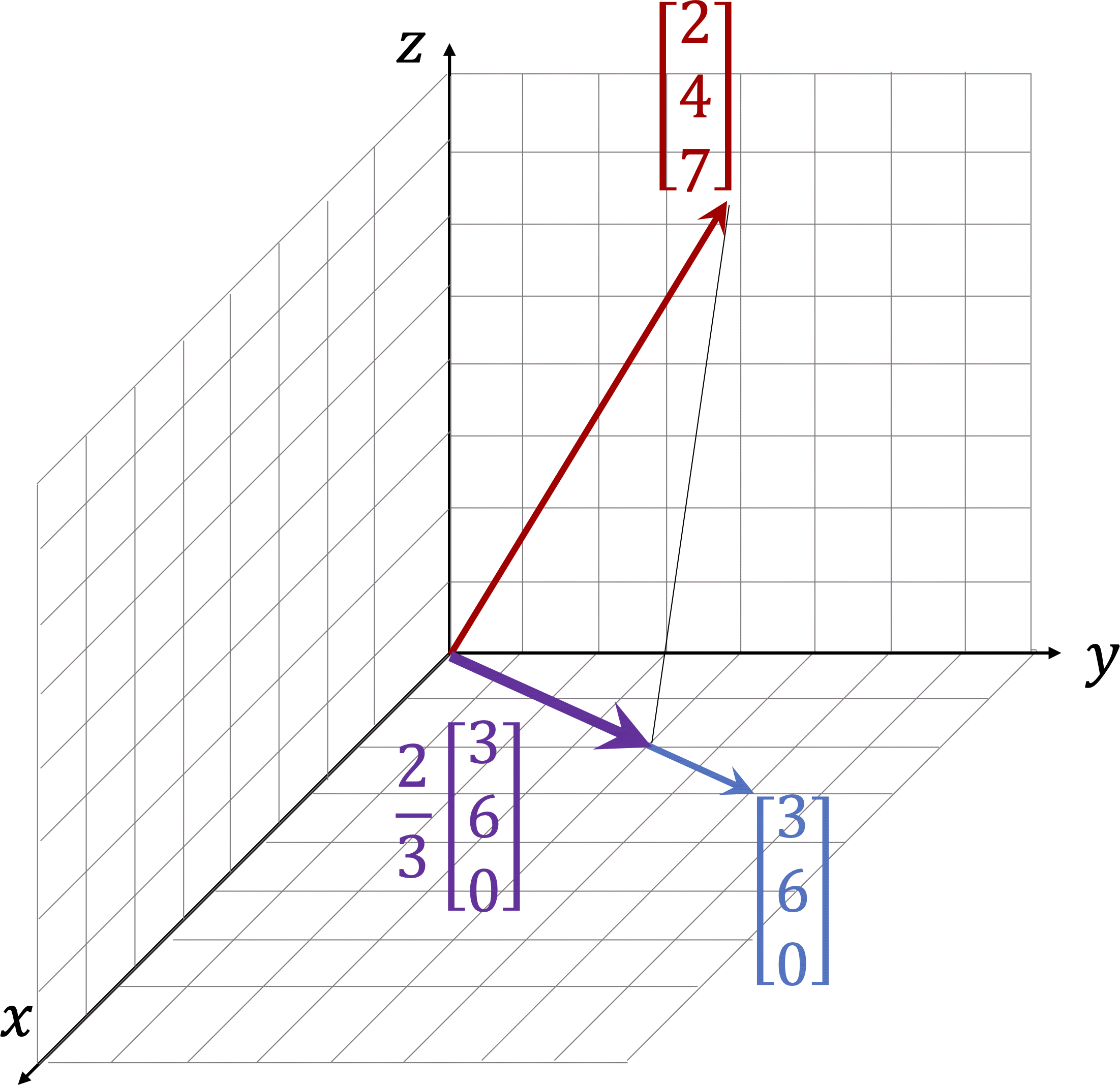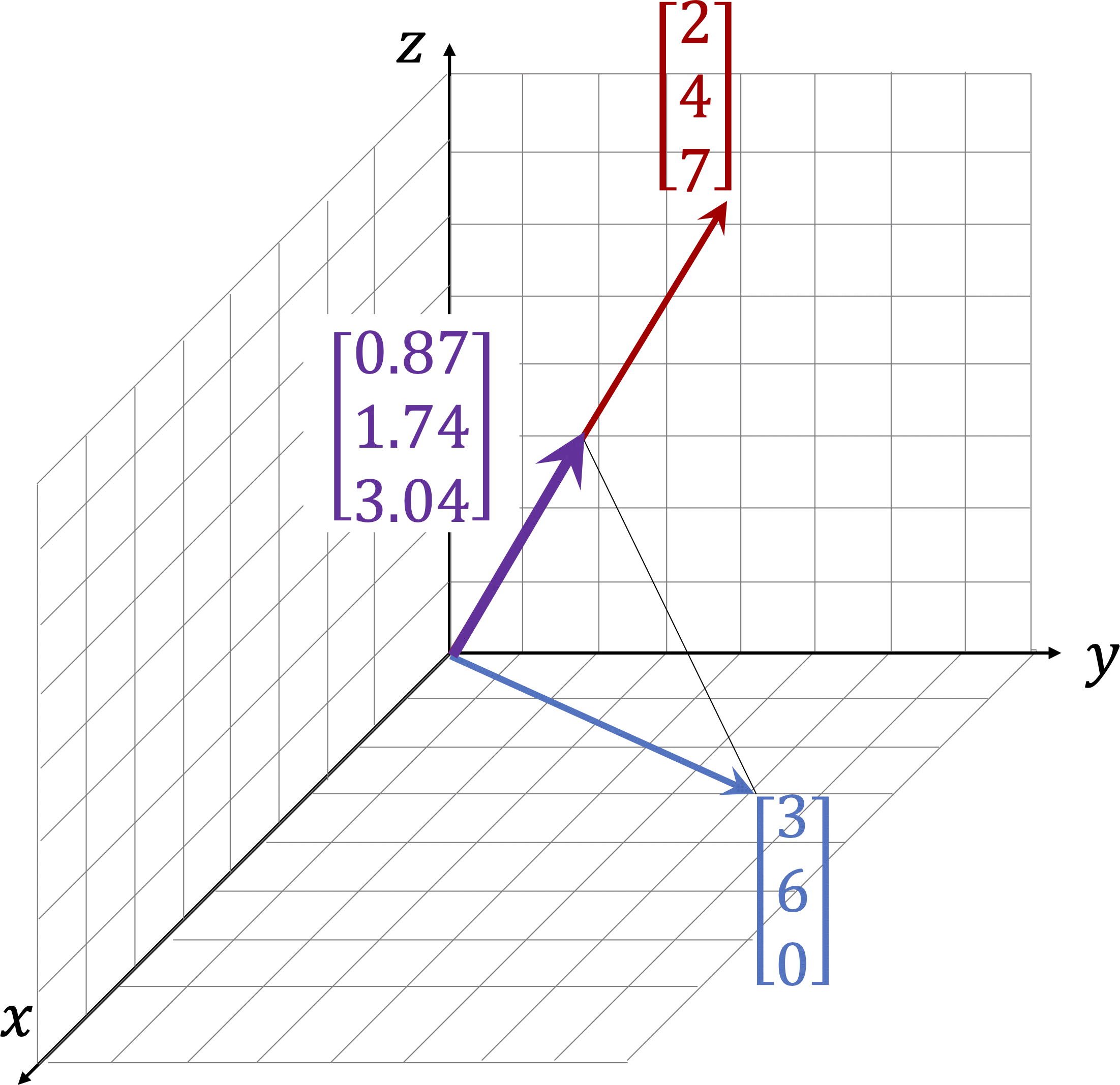Definition 1.6.1. Projection along a vector.
Given two vectors \(\vec{a}\) and \(\vec{u}\text{,}\) the projection of \(\vec{a}\) along \(\vec{u}\) is given by \(\boldsymbol{\alpha \, \vec{u}}\) where
\begin{equation*}
\alpha = \frac{\vec{a} \cdot \vec{u}}{\vec{u} \cdot \vec{u}}.
\end{equation*}
Similarly, the projection of \(\vec{u}\) along \(\vec{a}\) is given by \(\boldsymbol{\beta \, \vec{a}}\) where
\begin{equation*}
\beta = \frac{\vec{a} \cdot \vec{u}}{\vec{a} \cdot \vec{a}}.
\end{equation*}





